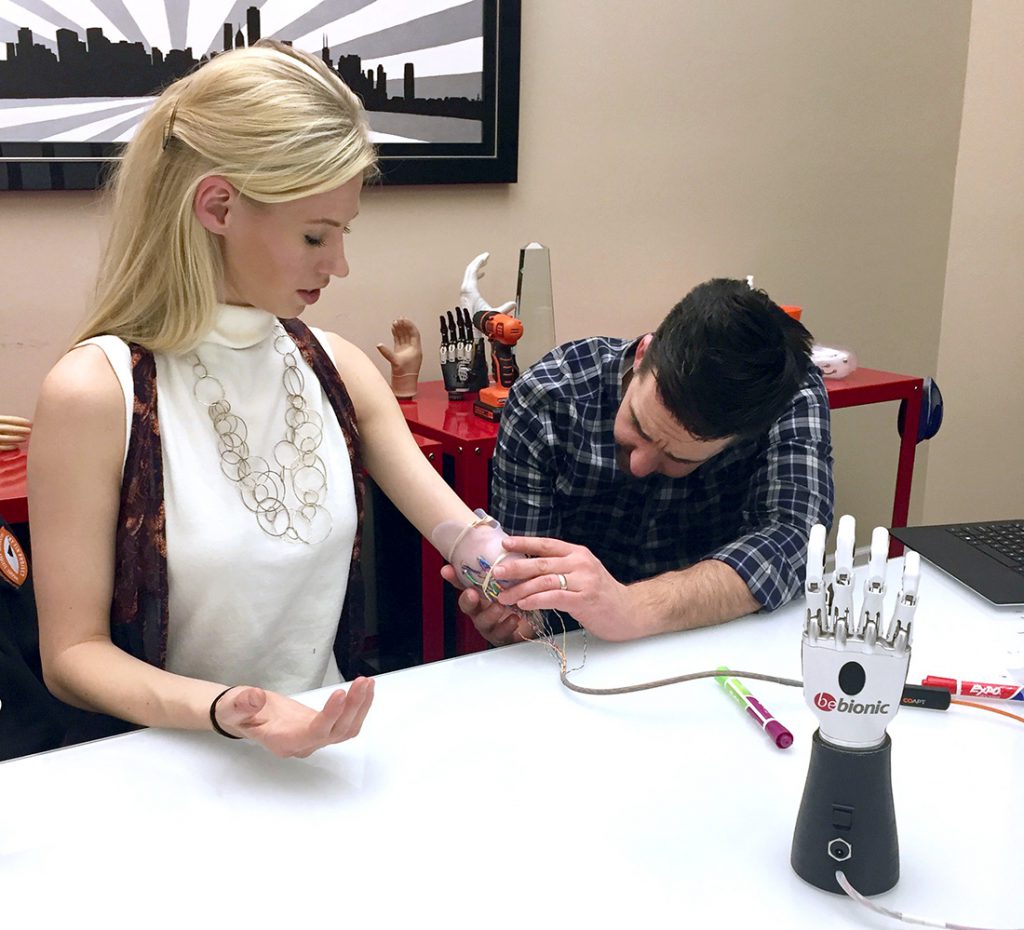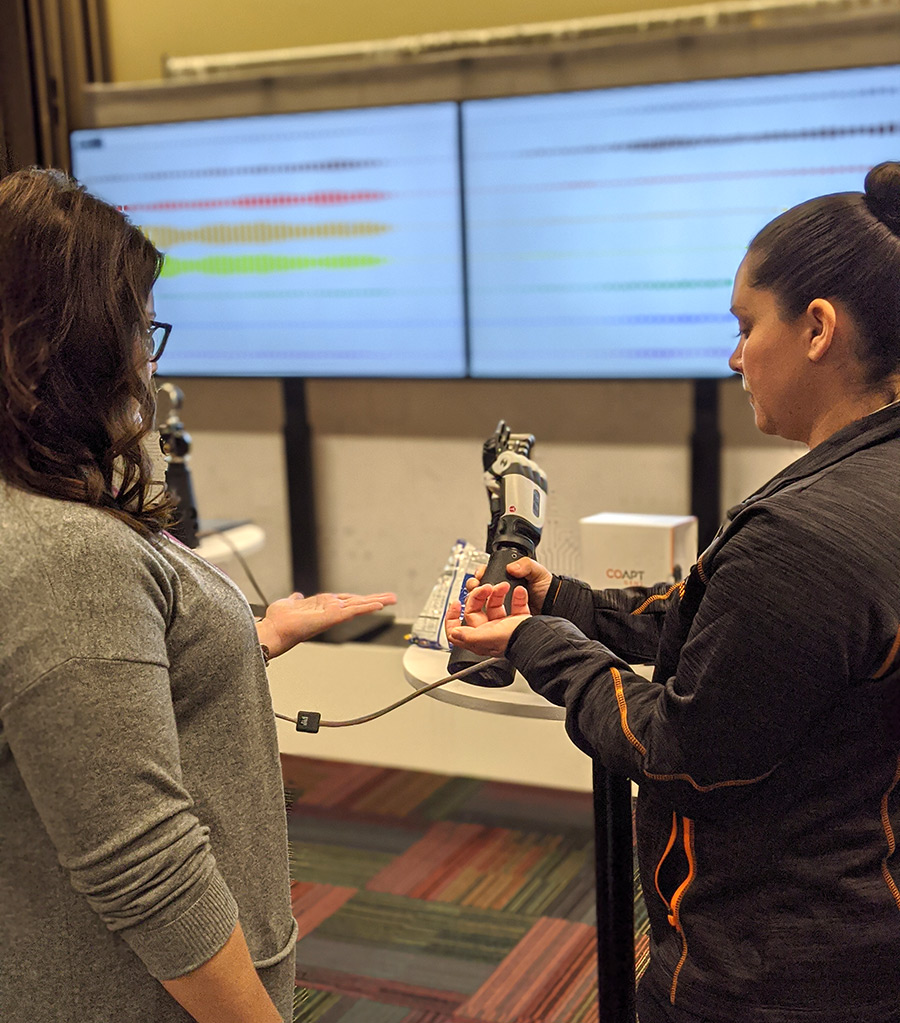WHAT IS COAPT PATTERN RECOGNITION?
Muscles in arms and hands rarely work alone. Whenever we move our arms and hands, multiple muscles make coordinated contractions in concert and each muscle emits its own small electrical signature (called myoelectricity) like it is its own instrument in that orchestra. Each different arm and hand movement results in a unique but repeatable set of these myoelectic patterns—like different songs in our concert.
Myoelectric signals are very tiny but they can be detected by electrodes on the surface of our skin. Using a full array of electrode contacts on the skin—covering the whole area of these underlying muscle contractions—lets all of the rich muscle pattern information be captured (akin to an array of microphones over our orchestra).

This is where pattern recognition for prosthetics goes to work. The complex sets of myoelectric patterns need to be “decoded” in real time and matched to their arm or hand action. Coapt’s pattern recognition is a system of finely tuned algorithms providing machine learning for prosthetics that does just that. Specifically for the residual muscle signals of those with upper limb loss or difference. For example, the pattern of myoelectric activity recorded on the residual forearm during hand opening is different from the pattern recorded while the hand is being closed.
The Complete Control number pattern recognition software from Coapt listens to the myoelectric activity and uses mathematical algorithms to determine when a pattern matches the user’s intention to make an arm or hand movement. It then tells the prosthesis to move accordingly, providing intuitive control of multiple prosthetic movements.
“Pattern Recognition is the technology that will render one- or two-site conventional myoelectric control to be obsolete.”
– Debra, OCCUPATIONAL THERAPIST
WHO IS A CANDIDATE FOR COAPT COMPLETE CONTROL PATTERN RECOGNITION?
Coapt’s Complete Control pattern recognition software is generally applicable to those with limb loss or limb difference at the transradial, transhumeral, or shoulder disarticulation levels.

Candidates for Coapt pattern recognition:
- Users seeking intuitive control of their prosthesis
- Both existing and not-yet myoelectric prosthesis wearers
- Users with one or more powered-articulated degrees of freedom
- Users with traditionally “good” OR traditionally “bad” myoelectric signals (pattern recognition does not depend on isolated, independent, or particularly strong myoelectric signals)
- Users who do OR don’t have challenges with co-contraction, fast-access, etc. mode-switching controls
Clinical evaluation is always encouraged to showcase each user’s potential with Coapt’s advanced pattern recognition. In general, the two major factors influencing success are 1) the ability to achieve and maintain reliable skin-electrode contact within the prosthesis interface, and 2) the willingness of the user and practitioner to adopt the intuitive and powerful mechanism of machine learning pattern recognition control.
Being a recipient of Targeted Muscle Reinnervation, Osseointegration, or other similar surgeries are not a requirement for using the Coapt Complete Control brain pattern recognition system but may expand control options and overall function for some individuals.
Coapt knows that all candidates are unique, please contact us to discuss any presentation you may have questions about.
BENEFITS OF COMPLETE CONTROL PATTERN RECOGNITION
Intuitive Control
Natural movement intents are used to control the prosthesis, generally making it easier to use. For example, the feeling of opening or closing a hand is used to control the prosthetic hand open and close (instead of wrist flexion motions to control the hand common for basic myoelectric devices).
Calibration and Setup
Control can be refined and personalized at any time using the quick on-board calibration. This makes addressing changes in socket fit, skin condition, fatigue, desired feelings for control, and much more easy to take on without the need to take the prosthesis off or make extra clinic visits.
Superior Proportional Control
A wider range of control speeds are available because myo inputs don’t need to be limited by thresholds and a broader range of input levels can be recognized by the algorithms.
No Mode-Switching
There is no need to use cumbersome actions like co-contractions, pulses, fast-slow gestures, etc. and this makes the control of a prosthesis more seamless.
Flexible Electrode Placement
There is much less need for isolated signals or precise electrode placements. This opens the door to more functional myotesting, freedom to place electrodes for socket, comfort, or limb constraints and provides helpful forgiveness in prosthesis donning.
